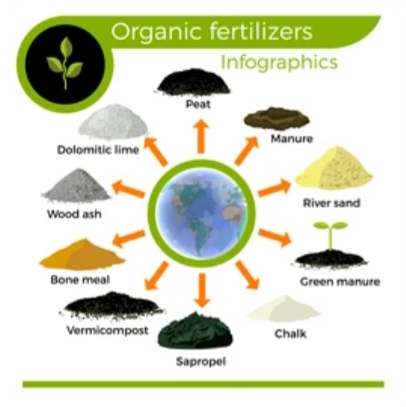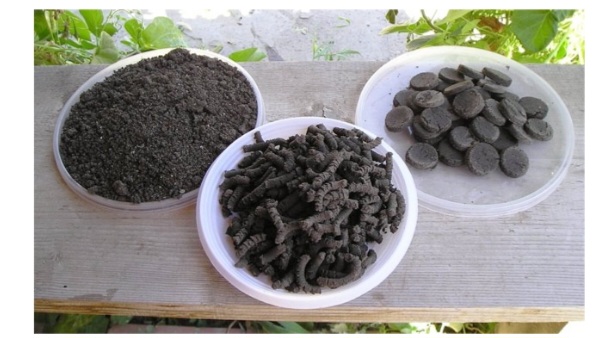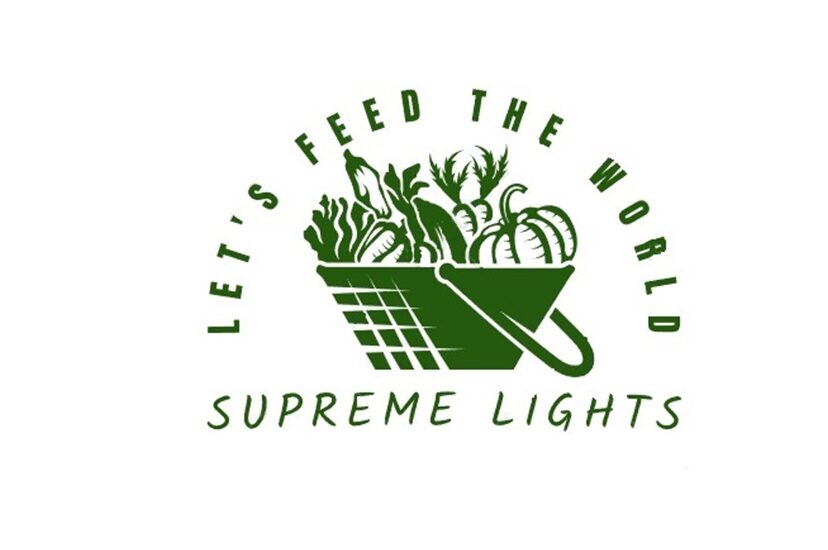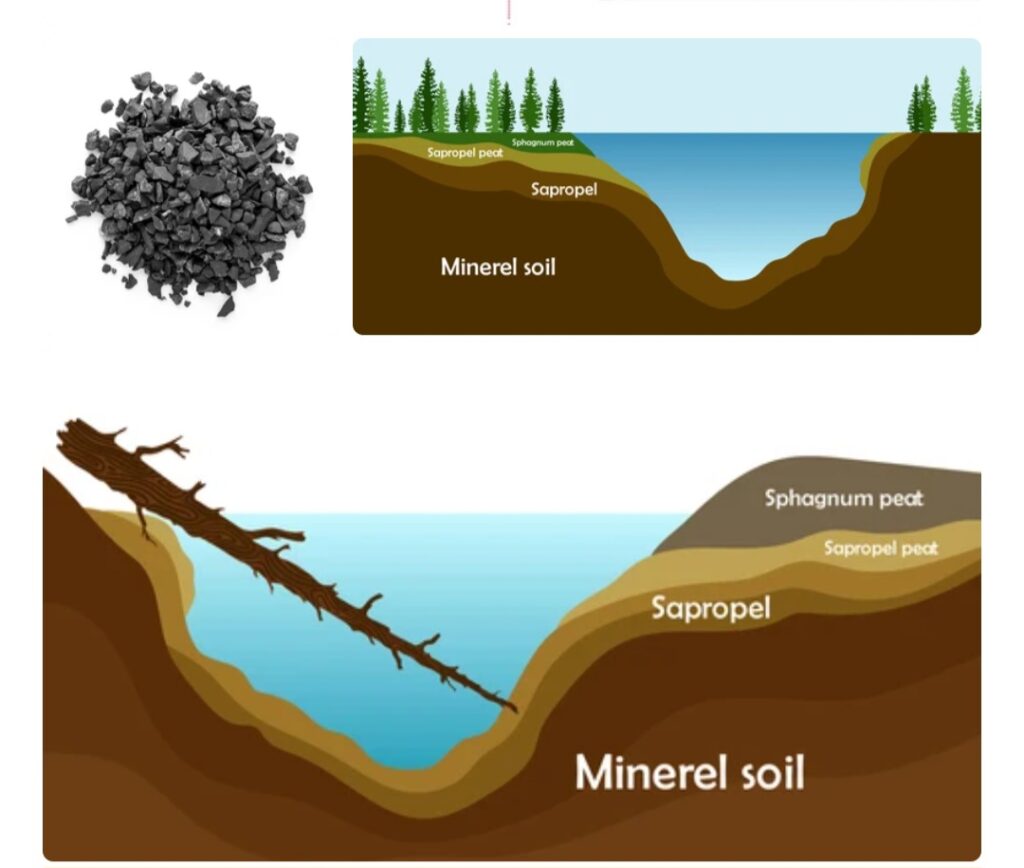
The sustainability of the world agricultural system is now an important global issue. Agricultural soils are overmined, leading to an unexplainable degradation and low yield. One of the ways devices by farmers, agronomist and scientist to increase efficiency and obtaining a better quality of produce recovery in agricultural activities is fertilizer application.
The two main types of fertilizers include; organic fertilizers and inorganic or chemical fertilizers.
A lot of negative effects accompany the excessive use of inorganic/chemical fertilizers. Overreliance on chemical fertilizers could lead to severe soil acidification, nutritional imbalance, deterioration of the rhizosphere microecological environment, and further increase in the activity of heavy metal ions in soil.
Organic fertilizers on the other hand has being a sustainable and conservation means with long term effects of increasing crop yield, improving soil health and fertility. In addition, they protect the environment, eco-friendly and cost-effective inputs to the farmers. Some examples of organic fertilizers include animal manure, poultry droppings, rabbit droppings, neem extracts, green manure, compost and sapropels etc. The name Sapropel is an ancient Greek words. Sapros means putrefaction and pelos means mud (or clay). It is a term used in marine geology to describe a dark-coloured, organic-rich sediment that forms at the bottom of bodies of water. It is made up of the remains of organisms like plankton, dead aquatic vegetation, the remains of living organisms, and also particles of soil humus, containing a large amount of organic substances, humus: ligninumus complex, carbohydrates, bitumens and others in a colloidal state. The Organic carbon concentrations in sapropels commonly exceed 2 wt.% in weight.
Sapropel or biodeposit is a promising biological deposit from water bodies, has found its limelight in its use in agricultural crop production as a soil conditioner and biofertilizer. It is a resource that is valuable and applicable in agriculture. It can present an important contribution to the solution of the conservation of the fertility of the soil for integrated nutrient management systems to maintain agricultural productivity and help in environmental conservation.
ADVANTAGES OF SAPROPEL OVER OTHER ORGANIC FERTILIZERS
1. It is made up of humic substances, microelements and microorganisms. This makes it a rich source of plant nutrients.
2. It has a long term effect
3. It’s efficiency has effect of and last longer between 7-10years.
4. It is 50% water saving
5. It easily and quickly change sand soil to fertile soils.
6. It has unique organic matter content.
USES OF SAPROPEL
1. FERTILIZERS AND SUBSTRATES: Sapropel is rich in organics, micro and macro elements, humic and fulvic acids. It is a valuable organic fertilizer, soil conditioner and additive for substrates. It is successfully used for long-term improvement of soil and production of various substrates.
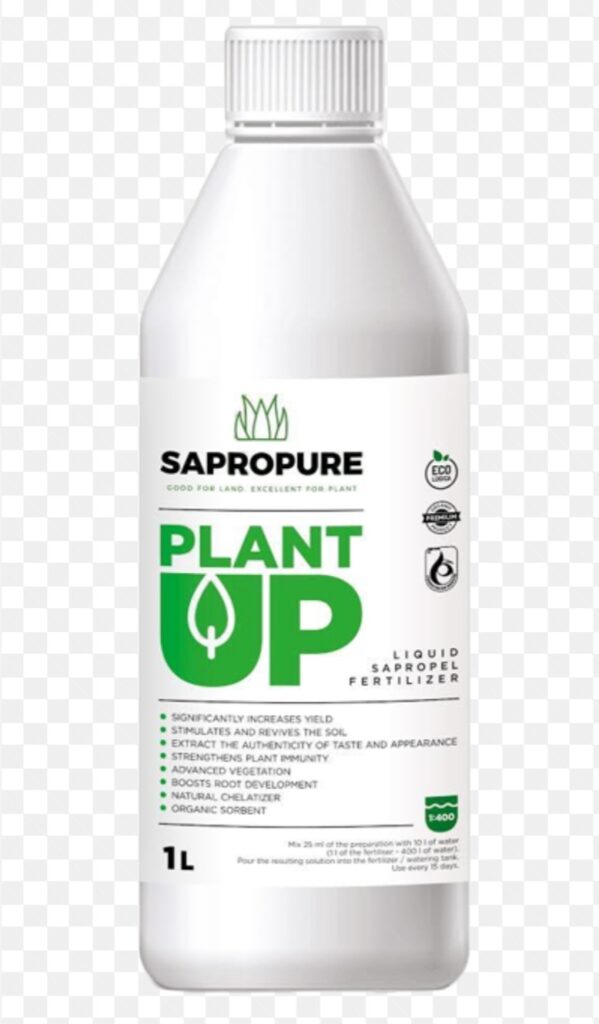
2. FEED ADDITIVE FOR ANIMALS AND BIRDS: Sapropel is also a rich source of B group vitamins, micro and macro elements, essential amino acids and bio stimulators. This gives reasons why it is highly used as a valuable feed additive for pigs and birds.
3. SPA AND BALNEOTHERAPY:
Sapropel is a unique material for used in balneology and SPA ( Sanus Per Aquam meaning ‘health by or through water’) treatments. Sapropel contains many organic, biologically active substances and microelements. During a procedure, it not only has positive effects on skin, but also other body tissue and organs, improves blood flow, protects skin from drying, aging and moistens it.
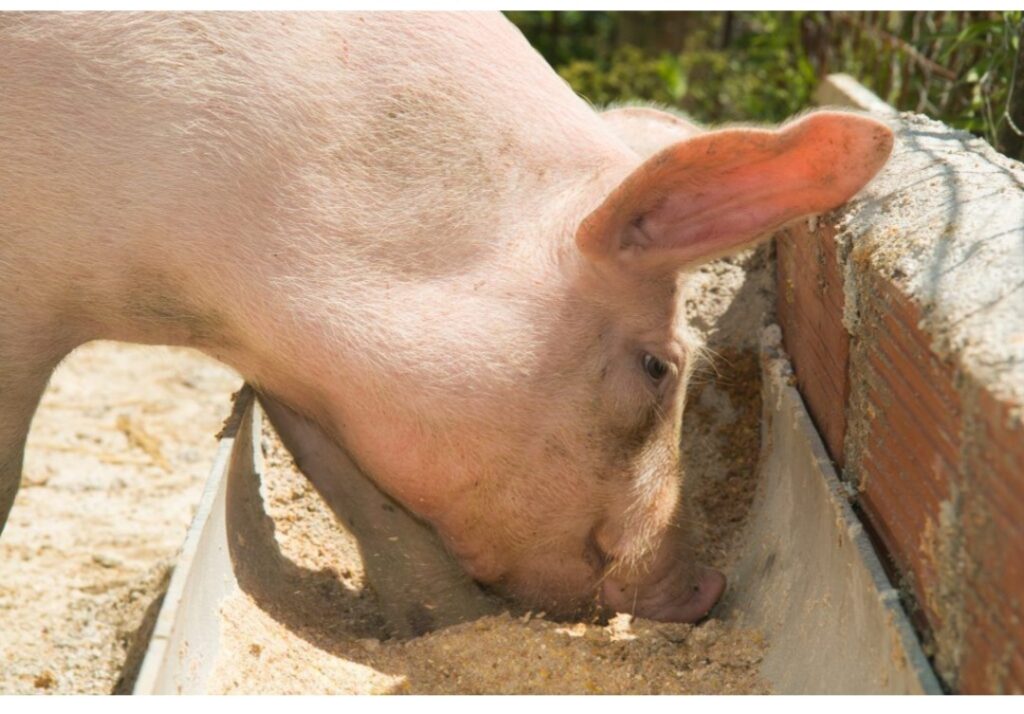
4. INDUSTRIAL MATERIALS:
Sapropel is used in keramzit production. Keramzit is a type of artificial porous filler which are lightweight concretes. Keramzit is used as a heat-insulating and sound-insulating filler in structural components of various types of buildings.
It is produced by roasting fusible, swelling clay ores along with slightly swelling clay ores and additives (such as solar oil, sawdust, peat, or a sulfate-alcohol mash); the roasting is done in rotary furnaces. One of the challenges in its production is to create a clay mixture with as high as possible expansion coefficient. Because sapropel contains organic, iron and silica, it is used effectively to increase that coefficient and to lower temperature needed.
5. SAPROPEL IN BIOFUEL PRODUCTION: Due to sapropel physical properties, it is suitable for biofuel production.
6. Sapropel also have strong binding properties, very useful in briquettes and granules formation. It is also used as an effective binding material during the production of thermo-isolating panels. Dry sapropel does not absorb water
7. Sapropel can be a raw material for chemistry industry, also as an addition in the production of construction materials.
8. Products with sapropel are resistant to mold.
9. Various useful materials can be extracted from sapropel, such as: tar, pitch, lipids, vitamins and sugar etc.
10. It has bactericidal properties. This gives reasons why plants growing in soil mulched with sapropel have less diseases.
11. Sapropel is also used in energy fuel production. This occurs during material extraction and preparation in a process called fuel briquette (direct extraction of useful heat).
Briquetting is a process of transforming loose material into the solid material, called briquette. The briquetting process is widely used in industry.
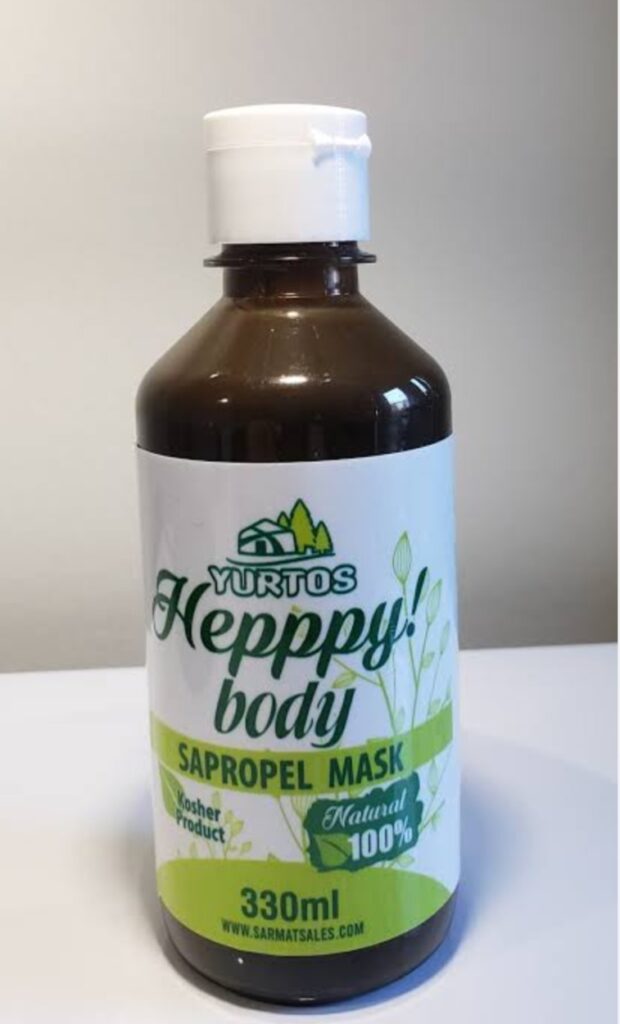
12. It can increase the nitrogen, phosphorous, humus, and microelement content of soil.
13. Sapropel is used in the preparation of soil substrates/growth media. A form of mixtures with peat, sludge, and any kind of composted biowaste.
14. It is commonly used in the amendments of different soils to increase nitrogen, phosphorous, humus, and microelements’ content.
15. It is clean and efficient ecologically friendly natural material used in agriculture as biofertilizer and soil conditioner .
16. A research reported that the use of sapropel as a fertilizer can increase barley yields by 15 to 20% and of potatoes by 25 to 30%.
17. Additionally, organic-based fertilizers like sapropel have a positive impact on amino acids content in tea and pH of the soil as a result of increased relative abundance of microorganisms belonging to Burkholderiales, Myxococcales, Streptomycetales, Nitrospirales, Ktedonobacterales, Acidobacteriales, Gemmatimonadales, and Solibacterales groups.
18. A recent reseach carried out in south-west Siberia by Naumova et al on the effect of sapropel-amended soil on the yield of field tomatoes reported that sapropel amendment do not influence tomato fruit yield, but instead increased lycopene content in the fruits by 80%, thus improving fruit quality.
19. The following soil properties “soil microbiological properties, mineralization of organic matter, and nitrogen immobilization” are more responsive to sapropel when used as soil ammendment than other soil chemical properties.
20. In an experiment carried out on plants lagging in their development, reported that the plants advanced in development and surpassed other plants in appearance when treated with the organic-mineral fertilizers (OMF) like sapropel. It was also reported that sapropel-based fertilizer are very effective in the early stages of fruiting when optimal application rate of 1 litre per 10000 m2 is carried out.
21. Also, a recent studies had reported that the use of organic fertilizer like sapropel treatment do lower the contents of cadmium (Cd), lead (Pb), and arsenic (As) in tea leaves significantly.
22. In an undocumented experiment carried out in Kenya reported that data collected in different regions of Tala in Machakos showed that the application of BDA on bananas, maize plantation, vegetables, coffee plantations, hydroponic cow feeds, and poultry farming resulted in positive effect in the quality of the produce and also increases the yield of the produce.
23. Addition of sapropel to soil can change not only soil acidity but also can increase the moisture level of soil as well as total porosity becomes improved.
24. The use of sapropel as a soil fertilizer can improve soil physical properties better than limestone or farmyard manure applications.
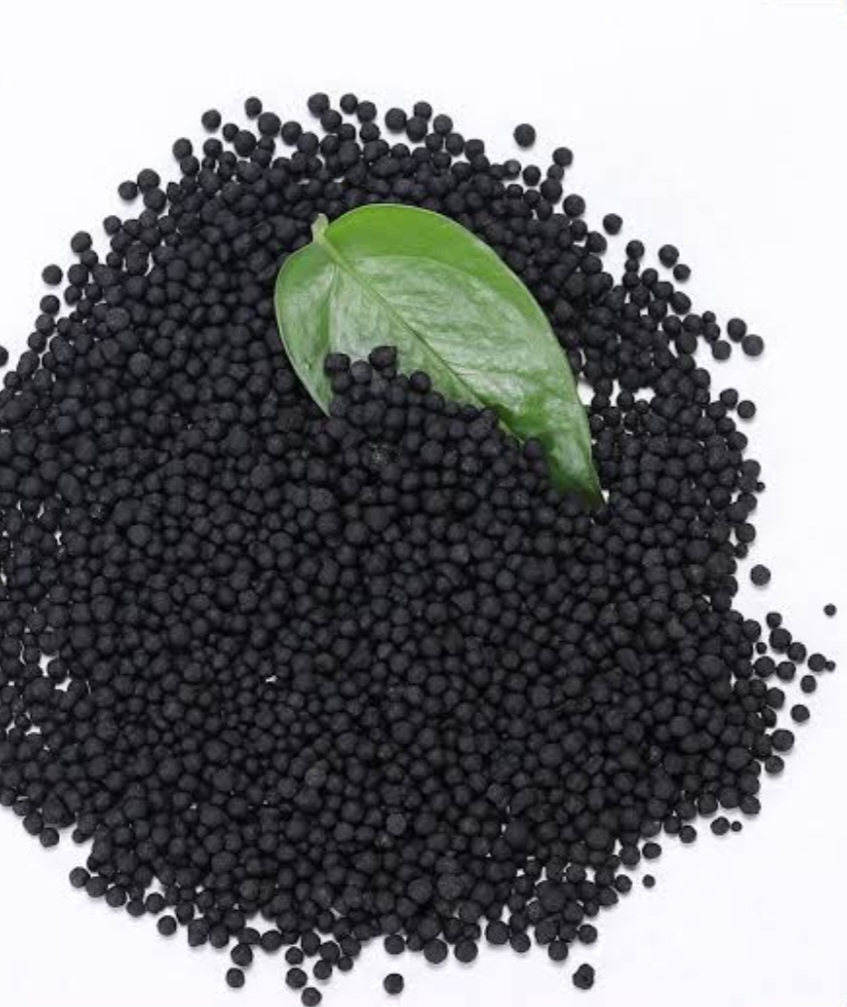
25. A research carried out on the effect of sapropel as a mineral fertilizer on the growth activity of tomatoes, beetroot, Swedish turnip, and carrot plants reported that mineral based fertilizer like sapropel contain unspecified substances that contributed to the plant growth activities in the seedling growth tests. The study further reported that BioDeposit Agro (BDA) sapropel contains substrate that enhance plant growth and low in growth-inhibiting component. BDA promoted the growth of both hypocotyl and radicle in all the tested seedlings. However, it was noted that the growth stimulation of the radicle was more by 10% compared to hypocotyl growth except for tomato seedlings. Also, variations in BDA concentration did not have any significant effect on hypocotyl growth.
26. Crop productivity is discovered to increased in higher level on seasonal bases after applications of carbonate sapropel as compared to limestone. This is due to the mineral content in sapropel and it plant nutrition potential properties.
27. Sapropels are eco-friendly fertilizers as they add nutrients to soils.
28. Sapropel modifies and improves the soil structure, physical properties, soil aeration, viscosity, and capillary rise. It positively have impacts on the hydrophilic-hydrophobic properties in fertilized soils, thus activates water movement and air mode in soils.
29. A study by Angelova et al. compared the effects of soil amendments with phosphorous compounds, organic fertilizers, and sapropel on the quantity of the phyto-accessible forms of lead (pb), zinc (Zn), and cadmium (Cd) and their uptake by triticale. The results indicated that the effect of the soil amendments on the mobile forms of the three elements were specific without a clear trend. A clear tendency, however, for the reduction of these three elements was observed with the use of natural fertilizers. The study also established that the absorption of Pb, Zn, and Cd by triticale was not related to the amount of mobile forms.
30. Sapropel possesses water-consuming and water-retaining abilities, and it increases the humus content in the soil and activates soil processes.
31. sapropel fertilizer is nonhazardous, therefore, can activate many biochemical and chemical processes and pathways in plants, leading to an increase of self-purification.
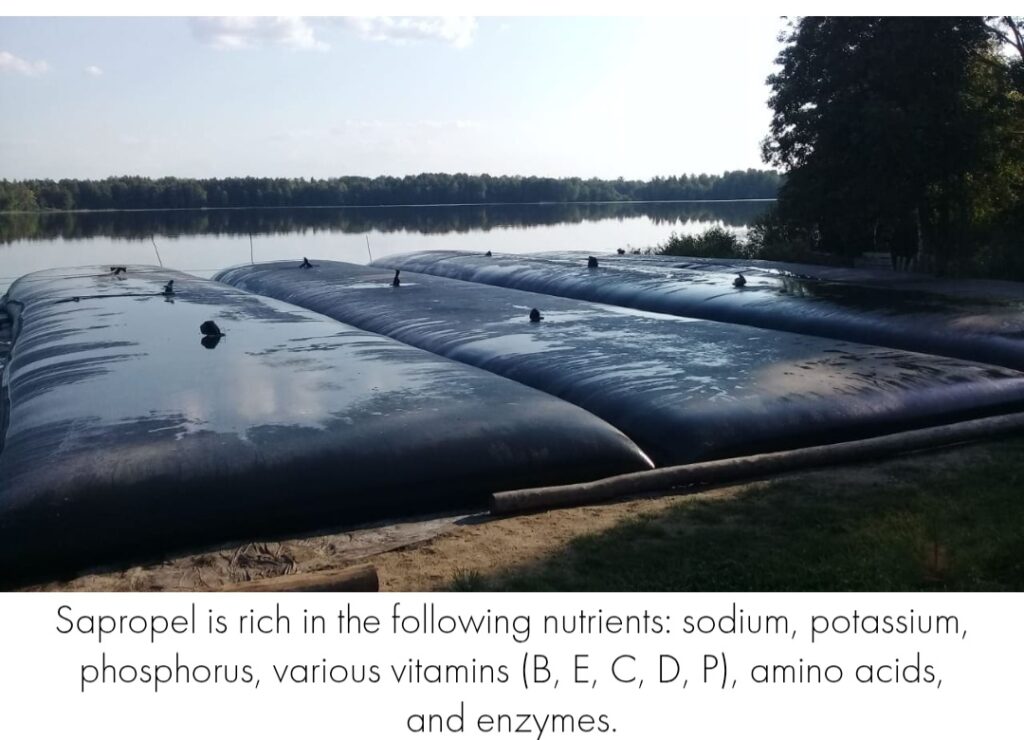
32. It can also stimulate seed sprouting and root growth of cultivated plants.
33. Sapropel also increases the humus content besides participating in the cycling of nitrogen, phosphorus, sulfur, and other microelements within the soil.
34. Sapropel can be used in paleo-reconstructions to provide information about past climates and oceanography
35. A research carried out in the Middle East countries in determining the effect of organic fertilizers, of both sapropel and peat as a fertilizers and soil conditioner as pretreatment of soil in greenhouses and on cucumbers raised in greenhouses, lead to yield increase of the cucumber.
FORMATION OF SAPROPEL
Worldwide, accumulation, formation, and intensive use of sapropel in agriculture and energy have been reported in temperate regions of Asia and Europe especially in Latvia, Bulgaria, Ukraine, Russia, Lithuania, Scandinavian Peninsula, Poland, France, Germany, and Belarus and Canada and the USA from the continent of America in the Great Lakes region and most Middle East countries such as Jordan and Saudi Arabia.
Sapropel is often found in the Mediterranean, Black Sea, and Baltic Sea. It is also found in freshwater bodies. It is formed in nutrient-rich waters under anaerobic conditions and can be formed from gyttja, or accumulate on top of it.
FRESHWATER SAPROPEL
In freshwater ecosystems, living organisms are important biological components that form sapropel. The most predominant living organisms transforming the complex organic matter and minerals in these ecosystems are the prokaryotes. Sapropel in this environment is highly populated with microorganisms ranging between 5.2 × 103 and 6.9 × 106 colony forming units (CFU) per gram of dry matter. The depth of the sediment determines the number and composition of the organisms, that is, they decrease with increase in depth of sediments. The most significant group of microorganisms found in sapropel is antibiotic producers (fungi and actinomycetes) and vitamin producers (bacteria and algae). Also found in the sediment are facultative anaerobes and or aerobes such as Micrococcus spp., Rhodococcus spp., Agrobacterium-related organisms, nitrogen-fixing groups (such as Azotobacter and Arthrobacter, among others), sulfur-reducing bacteria (Deltaproteobacteria) and methanogenic Euryarchaeota. Fe (III)-reducing bacteria like Geobacter spp. , Cyanobacteria, and other plant growth-promoting bacteria belonging to Gammaproteobacteria and Bacilli have also been found in sapropel. Therefore, the presence of living organisms is important in decomposition and transformation of organic substances into individual components available to the plants.
SAPROPEL FORMATION IN OCEAN AND SEAS
Sapropels have been recorded in the Mediterranean sediments since the closure of the Eastern Tethys Ocean 13.5 million years ago. The formation of sapropel events in the Mediterranean Sea occurs approximately every 21,000 years and last between 3,000 and 5,000 years. The first identification of these events occurred in the mid-20th century. Since then, their formulative conditions of have been investigated.
The occurrence of sapropels has been related to the Earth’s orbital parameters (Milankovitch cycles). The precession cycles influence the African monsoon, which influences the Mediterranean circulation through increases in freshwater inputs.
The term sapropel events refer to cyclic oceanic anoxic events (OAE), in particular those affecting the Mediterranean Sea with a periodicity of about 21,000 years. Sapropel development occur under reduced oxygen at the bottom of waters bodies during oceanic anoxic event (OAE). Oxygen only reach the deep sea bottom by new deep-water formation and consequent “ventilation” of deep basins. There are two main causes of OAE:
1. Reduction in deep-water circulation and
2. Raised oxygen demand from upper level.
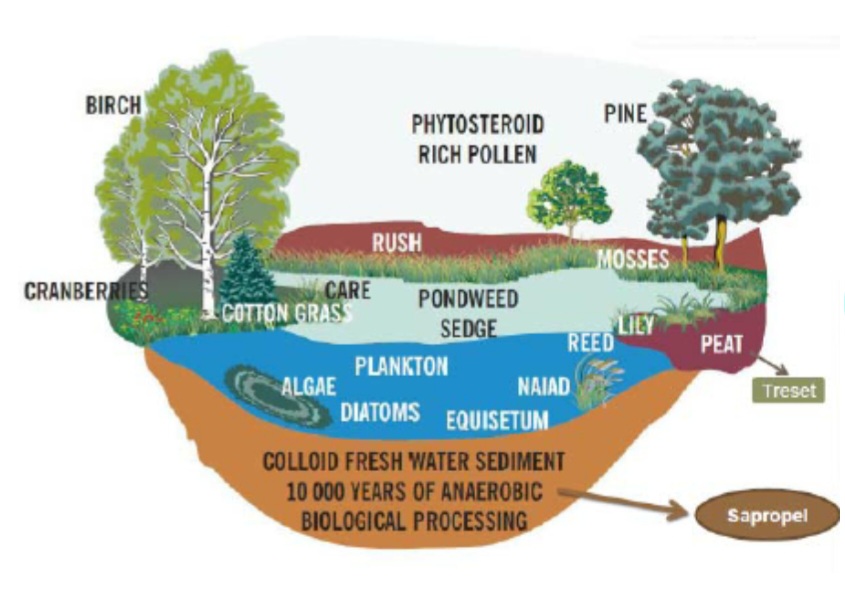
1. REDUCTION IN DEEP-WATER CIRCULATION
A reduction in deep-water circulation do lead to a serious decrease in deep-water oxygen concentrations due to biochemical oxygen demand during the decay of organic matter. This organic matter sinks into the deep sea as a result of export production from surface waters. Oxygen depletion in bottom waters then favours the enhanced preservation of the organic matter during burial by the sediments.
2. RAISED OXYGEN DEMAND FROM UPPER LEVEL
Organic-rich sediments may also form in well-ventilated settings that have highly productive surface waters. Here, the high surface demand simply extracts the oxygen before it can enter the deep circulation current thus depriving the bottom waters of oxygen.
SAPROPEL FORMATION IN THE MEDITERRANEAN OCEAN
Sapropelic deposits from global ocean anoxic events form important oil source rocks. In eastern Mediterranean ocean, sapropel formation and deposits have concentrated here, the last of which occurred between 9.5 and 5.5 thousand years ago.
SAPROPEL FORMATION IN BLACK SEA
In the Black Sea, sapropels are distributed at a depth of 500 to 2200 m, and in different morpholithological zones. The sapropels here have different thicknesses. Deep sea sediments are called the sediments formed outside the zone of influence of hydrogenic factors. Some of the hydrogenic factors include: wind-driven waves and internal waves as well as of the transgressive and regressive cycles of the Black Sea basin.
These deep sea sediments called sapropels are considered “deep sea organogenic mineral sediment” (DSOMS) because they are deep-sea sediments with a significant organic component. Note that not all DSOMS are classified as sapropels.
A DSOMS is essentially a broader term encompassing any sediment rich in organic matter from the deep sea. That is, sediments that contain more than 3% organic carbon. while a “sapropel” is a specific type of DSOMS characterized by particularly high concentrations of organic matter, often formed under conditions of low oxygen and rapid organic matter deposition, typically appearing as dark, layered deposits in marine sediment cores. The sapropels form a single horizon with constant thickness typical of the Black Sea basin. Analogues of the sapropels on the continental shelf and the upper part of the continental slope are the green aleurite-pelite, oozes with accumulation of plant detritus and decomposed shells of Mytilus galloprovincialis. The transition from aleurite-pelitic oozes to sapropels is facial. The organic matter in the sapropels is of heterogeneous origin. They are composed primarily of planktogenic organisms (about 80%) and continental organic matter (20%). The planktonic organisms are well preserved in most cases under the conditions of the hydrogen sulfide zone. The main components of the sapropels are the dinoflagellate cysts, diatom algae, coccolithophorids, peridiniales. The mineral part of sapropel muds is represented by a poly-component mixture of clay minerals. The minerals illite and montmorillonite predominate, chlorite and kaolinite occur in subordinate quantities. Individual grains of quartz, feldspar, volcanic glass and others are rarely found among them. Carbonate minerals are mainly represented by calcite and dolomite. It is generally accepted that the main source of hydrogen sulfide in the Black Sea today are the processes of anaerobic decomposition of organic matter by sulfate-reducing bacteria (SRB). The organic substance that is fixed at the bottom of the basin in the form of organogenic-mineral sediments (sapropels) is a product of the mass extinction of the plankton biomass as a result of the Black Sea flood. There is an excess of a huge amount of organic matter, which creates favorable conditions for the development of bacterial sulfate reduction.
COMPOSITION AND CHARACTERISTICS OF SAPROPEL
Sapropel also known as biodeposit is freshwater organic-rich mud sediment formed from the remains of plankton, water plants, and other marine-dwelling organisms which are involved in the transformation of mineral components. Sapropels have a complex chemical composition with a broad range of values and it depends on the geographical position of the region of occurrence.
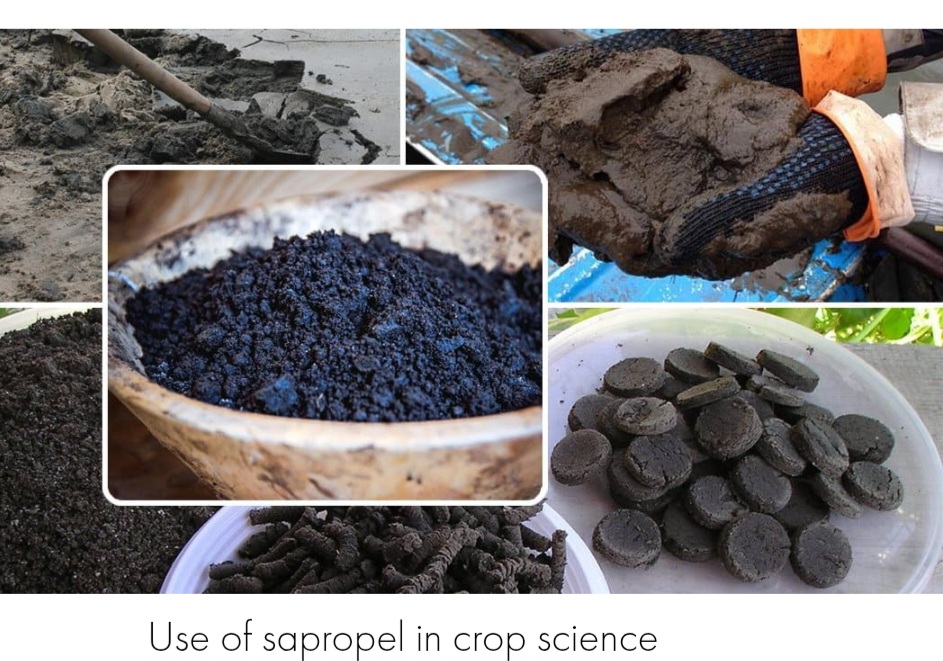
Sapropel consists of three main components:
1. water about 60–90%
2. mineral substances consisting of microelements manganese (Mn), copper (Cu), boron (B), zinc (Zn), iodine (I), chromium (Cr), silver (Ag), barium (Ba), titanium (Ti), molybdenum (Mo), and beryllium (Be), among others, and macroelements including nitrogen, silica, calcium, magnesium, iron, aluminium, potassium, phosphorus, and sulfur. Presence of these substances in the soil improves the humus content thus preventing erosion and eventually restoring soil fertility by improving the soil structure.
3. Organic substances with organic matter ranging from 15 to 90% by weight, organic carbon not less than 40%, and moisture content ranging between 60 and 90%. Sapropel also contains many biologically active substances such as water-soluble vitamins A (retinol), В1 (thiamine), C (ascorbic acid and dehydroascorbic acid), В2 (riboflavin), B3 (niacin), В6 (pyridoxine), В12 (cyanocobalamin), provitamin for vitamin A (β-carotene), and B9 (folic acid) and fat-soluble vitamins E (α-tocopherol), D, and P. It also contain water-soluble amino acids such as; histidine, glutamine, glycine, valine, arginine, aspartate, alanine, serine, leucine, isoleucine, phenylalanine, tyrosine, lysine, methionine, threonine, and cysteine. Also, it contains natural enzymes such as; catalase, peroxidase, reductase, protease, urease, and xanthine oxidase. Included are humic complex such as; humic and fulvic acids. Humic acids are the largest group of organic substances and are dark brown. They have adhesive properties and thus associated with minerals in the soil, which significantly improves the soil structure and affects the growth and development of plants.
Phytohormones such as gibberellic acid, cytokinin, ethylene, abscisic acid, brassinosteroids, and derivatives of indole-3-acetic acid are also found in sapropels. They affect plant growth and development.
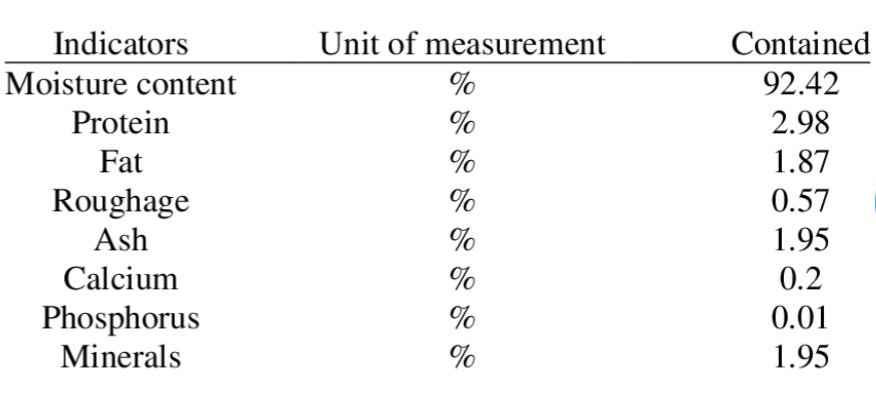
CHARACTERISTICS OF SAPROPEL
1. Sapropel is characterized by a low amount of carbohydrate. The organic matter in sapropel contains 6–25% hemicellulose and 1–8% cellulose, and these can be used in the production of fertilizers, relevant in agriculture and horticulture as well as additives in animal feed.
2. Sapropel contains high amounts of bitumen which is characterized by fatty acids, steroids, paraffin, wax, glycerol, hydrocarbons, and other nonhydrolysable substances.
3. Bitumen in sapropel plays an inhibitory role against various microorganisms with antioxidant activity.
4. Another important active component of sapropel is antibiotics, mostly synthesized by fungi and actinomycetes, which promote nitrogen transfer to the form available to plants.
USE OF SAPROPEL IN ANIMAL FEED PRODUCTION
In agriculture, sapropel is used in the production of animal feed. It is highly concentrated with proteins, vitamins, enzymes, and other biologically active substances. Thus, reason for its application in animal feed production.
Sapropel is a new technology used for improvement of animal feed mixtures. Sapropel enhanced feeds have the potential to improve animals’ liver and stomach functions, blood formation, and circulation and reduces disease occurrence and increases resistance of animals towards adverse environmental conditions.
Researches had proven that fodder enriched with sapropel lead to increased efficiency of nutrient uptake and digestion in pigs. Another research had proven that cattle fed with basal diet without or with sapropel, on average, the daily body weight gain increased to 532 and 445 g without or with sapropel.
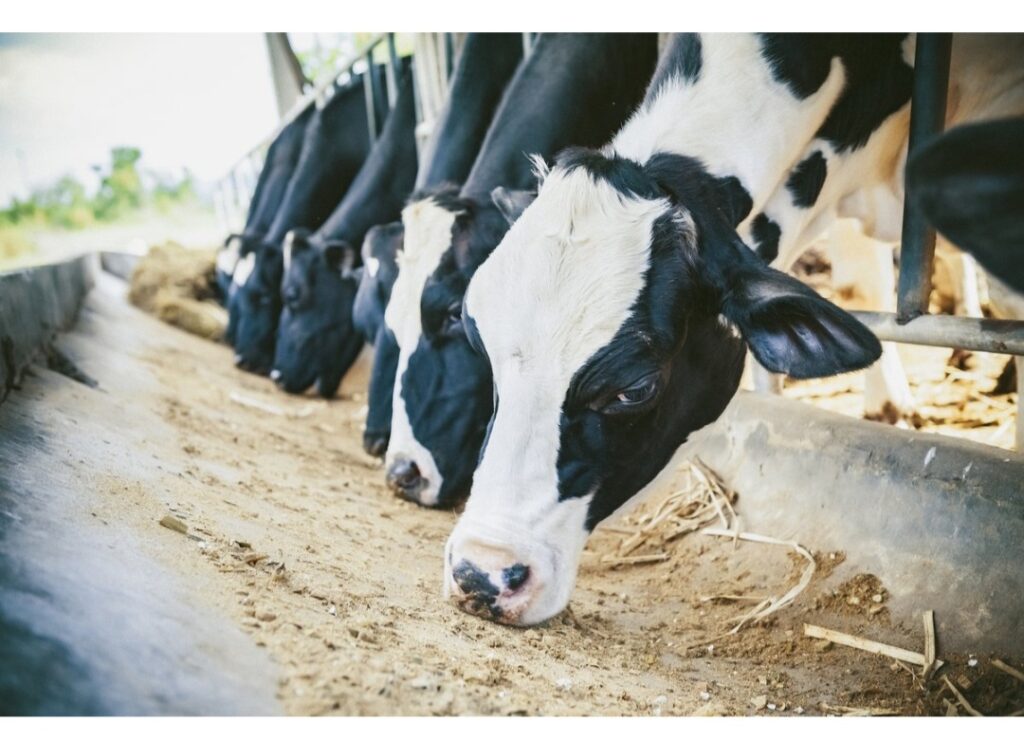
USE OF SAPROPEL AS ORGANIC FERTILIZER
Different types of organic fertilizers used by farmers to increase their production include; manure, compost, neem extracts and vermicompost etc. Sapropel, a new technology has emerge for use in agricultural crop production. Although the use of natural organic fertilizers such as peat, sapropel, and brown coal has increased during the last decades, but not yet gain popularity all over the world. Most developed countries has adopted this technology while developing countries are still at disadvantage in the use of this technology. With this, limited data on the use of sapropel technology are available in many countries especially those with tropical climates like Africa.
Sapropel, a rich source of soil organic matter, stimulate microbiological activity, and contain plenty of mineral nutrients that when incorporated into the soil , act as a fertilizer rich nutrient source.
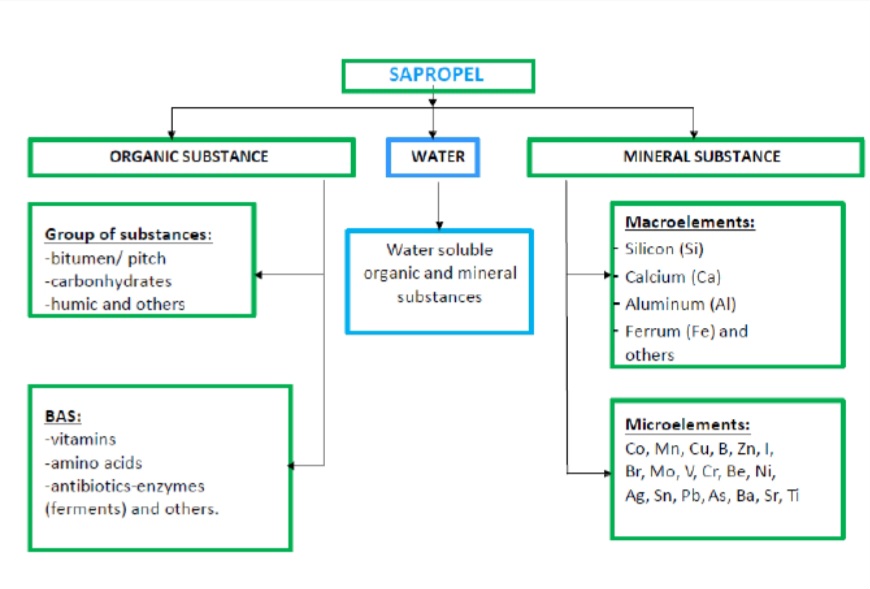
In conclusion, the world is becoming increasingly concerned about food insecurity, low crop yield, soil degradation, desertification, and environmental pollution etc. In developed nations, advancement in technology has help proffer solutions to most of these major problems compared to developing nations, particularly amid resource-poor farmers who do do not have adequate resources or source for capital to meet their farming needs.
The basic principles of good farming practices can also help reduce some of these problems of land degradation, decreasing soil fertility, and rapidly declining production levels that occur in large parts of the world. Biological fertilizers also play a crucial role in productivity and sustainability of soil and also in environmental protection as they are eco-friendly and cost-effective inputs to the farmers; therefore, using biological and organic fertilizers, which are low-input systems, can help in achieving sustainability of farms. Sapropel can be considered as a valuable resource with wide application possibilities in agriculture to enhance soil productivity, crop productivity, and quality. It is rich in organic matter, enriched in sulphides, such as pyrite or Fe-monosulphides and lots more.
